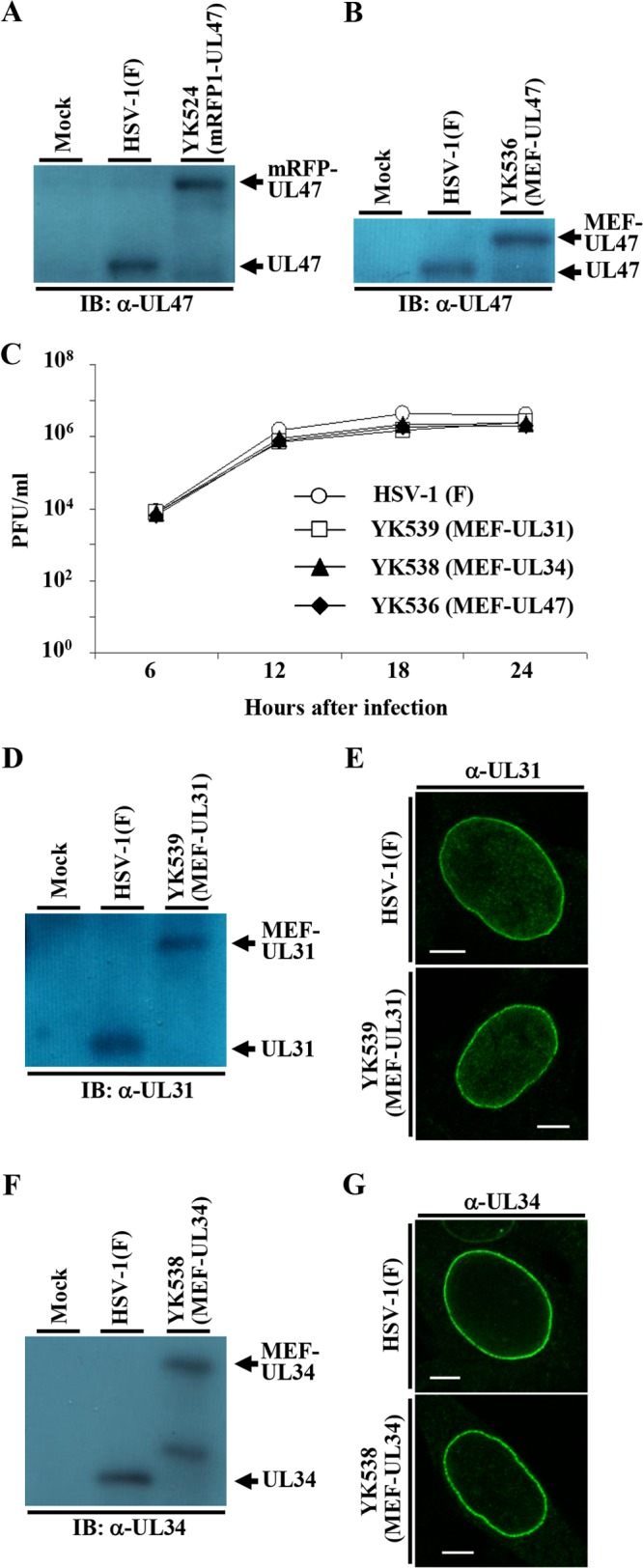FIG 2.

Characterization of the recombinant viruses used in this study. (A) Vero cells mock infected or infected with wild-type HSV-1(F) or YK524 (mRFP1-UL47) at an MOI of 5 for 18 h were analyzed by immunoblotting (IB) with antibody to UL47. (B) Vero cells mock infected or infected with wild-type HSV-1(F) or YK536 (MEF-UL47) at an MOI of 5 for 18 h were analyzed by immunoblotting with antibody to UL47. (C) Vero cells were infected with wild-type HSV-1(F), YK539 (MEF-UL31), YK538 (MEF-UL34), or YK536 (MEF-UL47) at an MOI of 5. Total viruses from cell culture supernatants and infected cells was harvested at the indicated times and assayed on Vero cells. (D) Vero cells mock infected or infected with wild-type HSV-1(F) or YK539 (MEF-UL31) at an MOI of 5 for 18 h were analyzed by immunoblotting with antibody to UL31. (E) Vero cells infected with wild-type HSV-1(F) or YK539 (MEF-UL31) at an MOI of 3 for 18 h were analyzed by immunofluorescence with antibody to UL31. Scale bar, 5 μm. (F) Vero cells mock infected or infected with wild-type HSV-1(F) or YK538 (MEF-UL34) at an MOI of 5 for 18 h were analyzed by immunoblotting with antibody to UL34. (G) Vero cells infected with wild-type HSV-1(F) or YK538 (MEF-UL34) at an MOI of 3 for 18 h were analyzed by immunofluorescence with antibody to UL34. Scale bar, 5 μm. α, anti.
